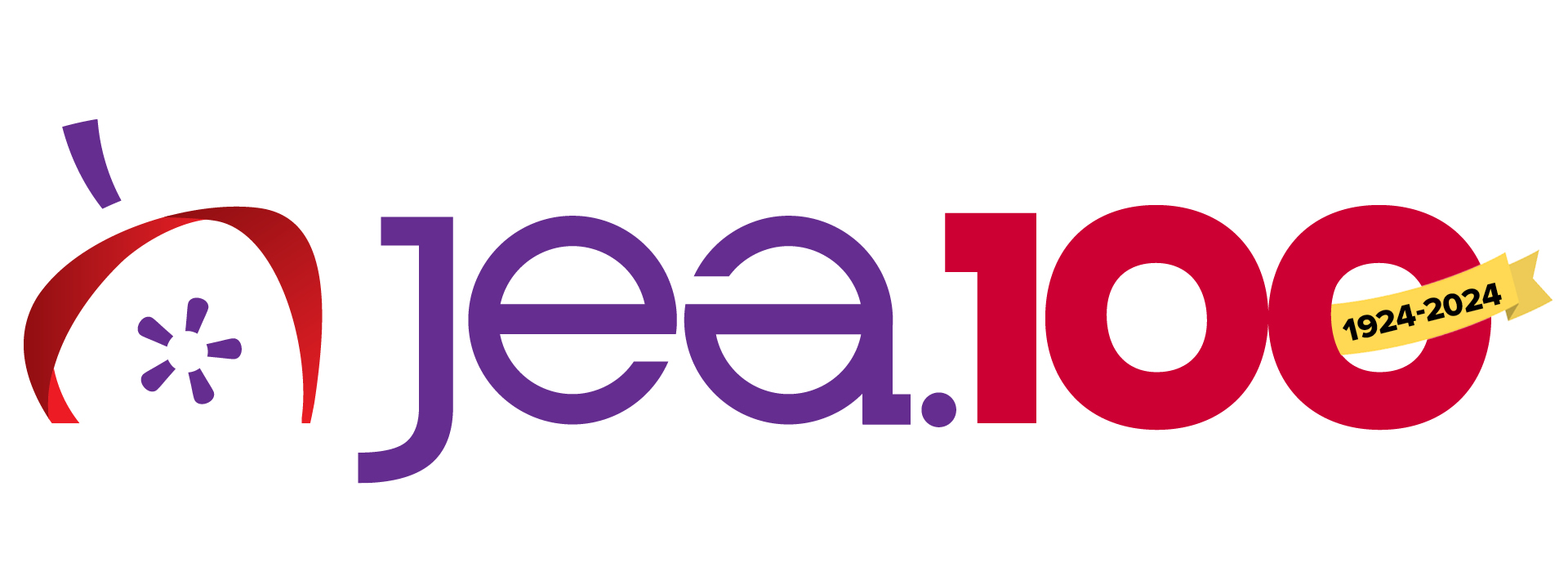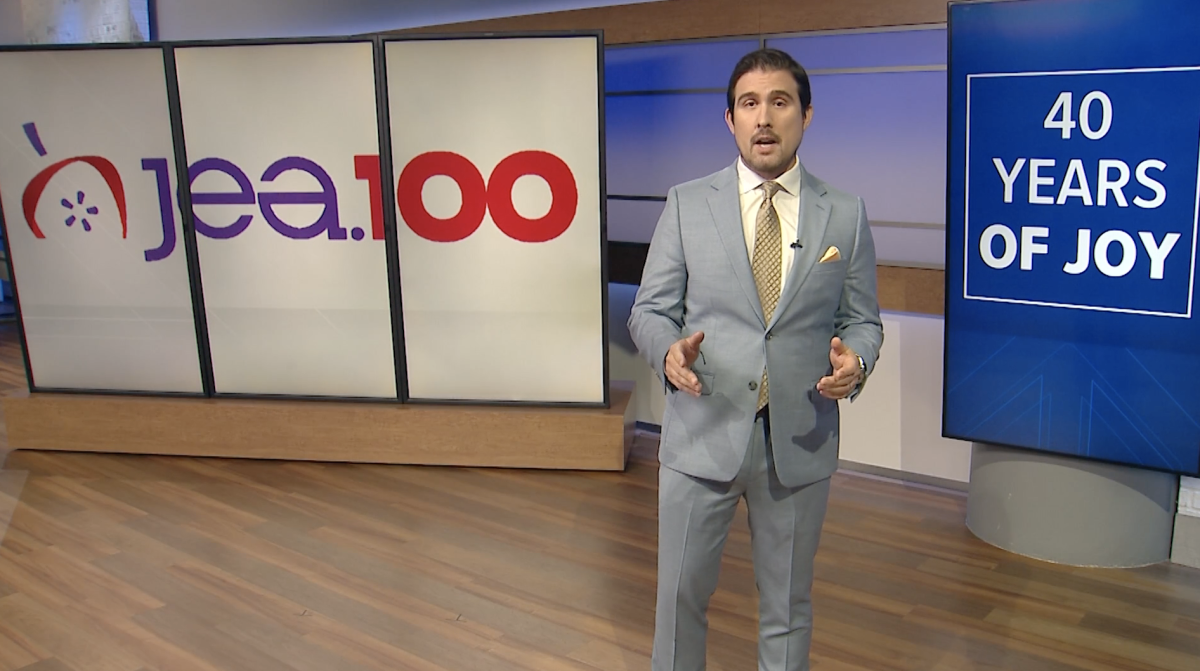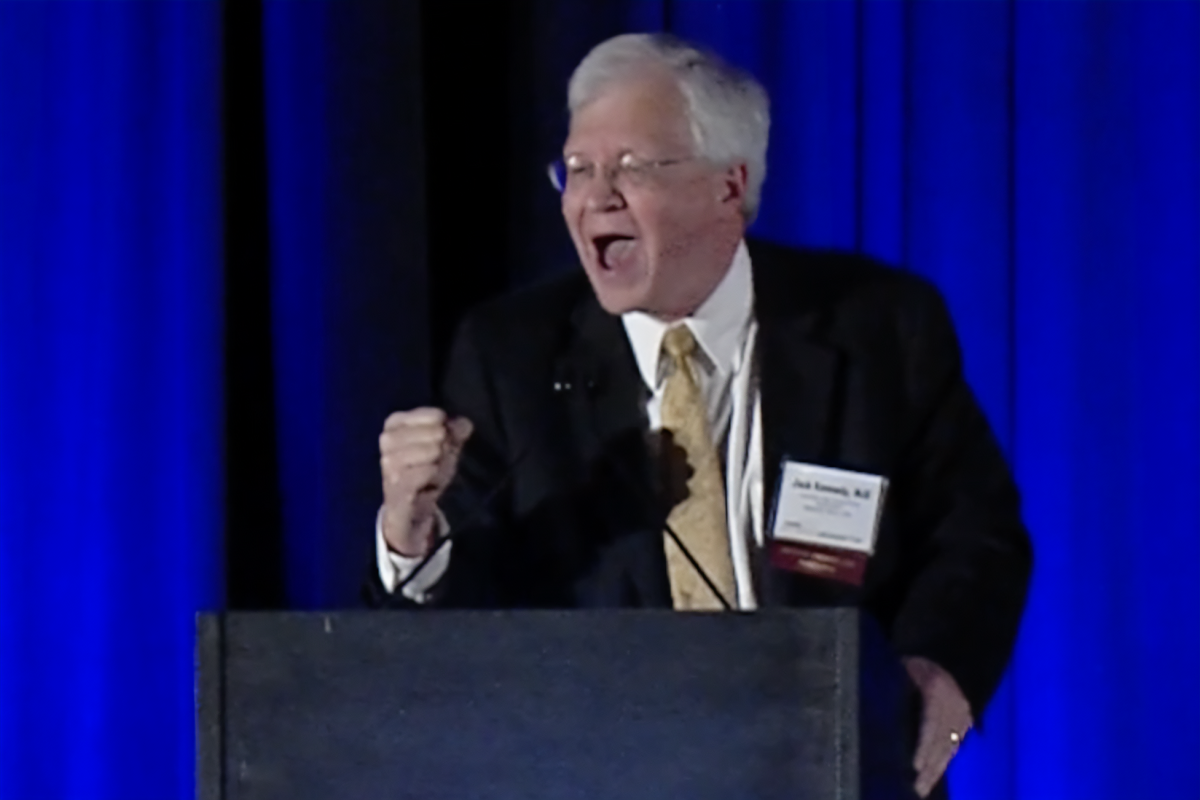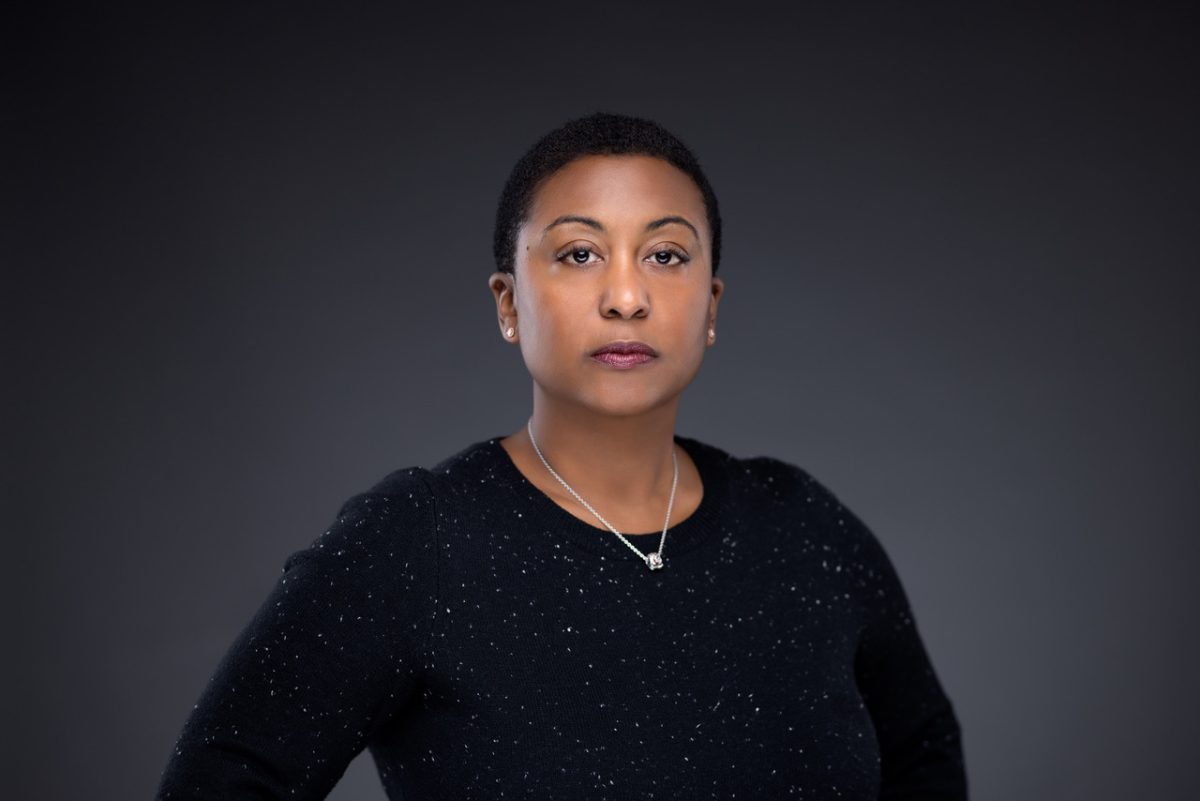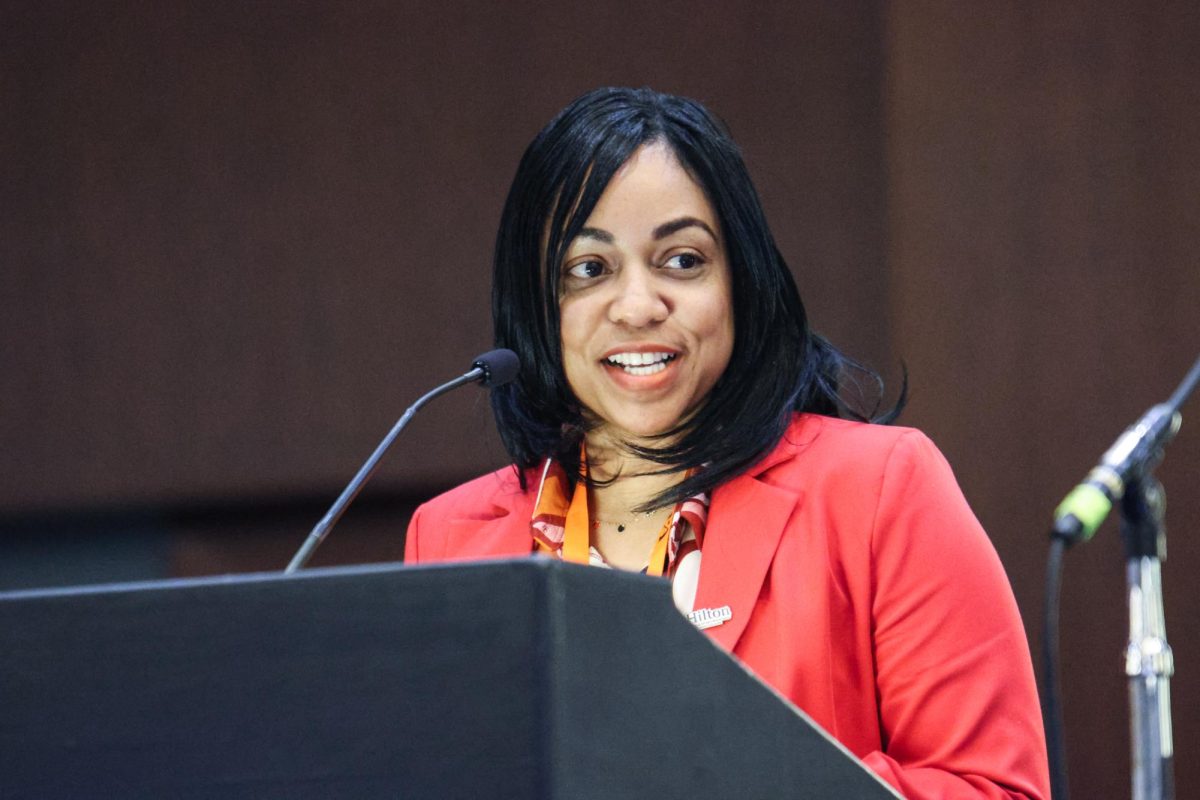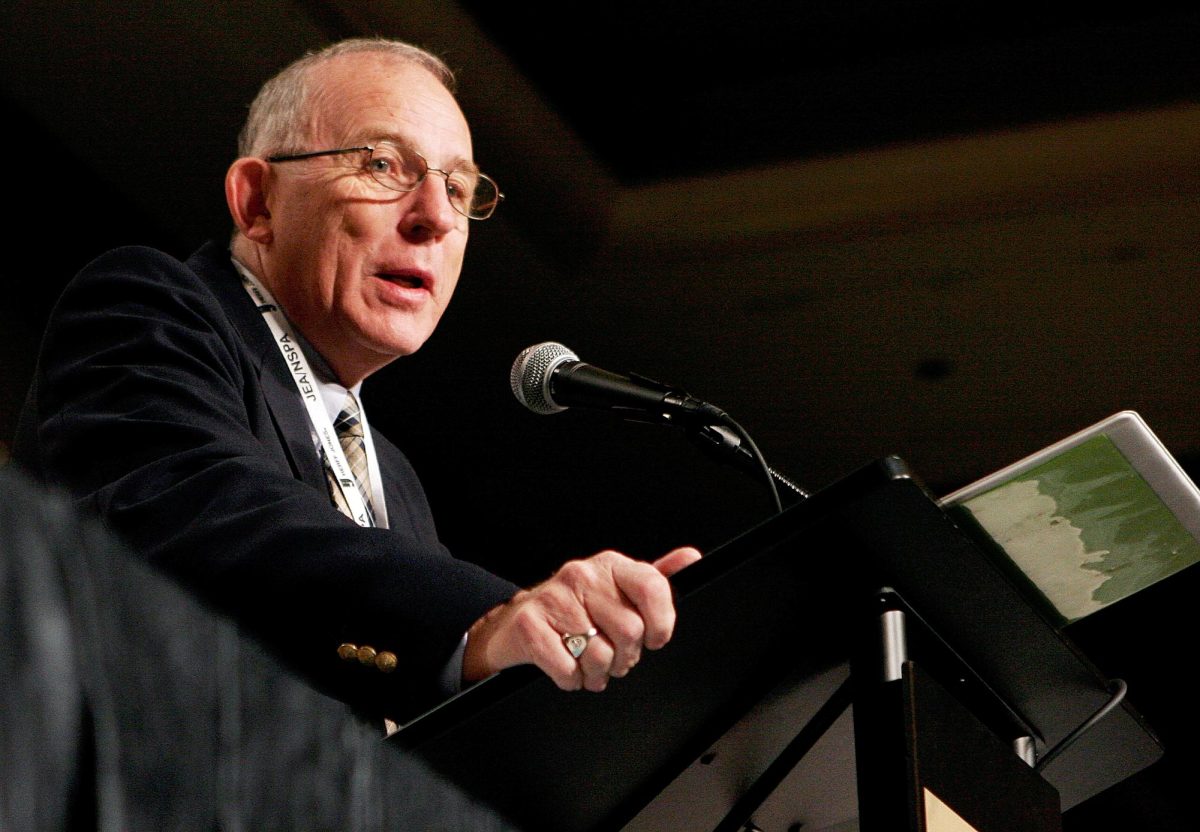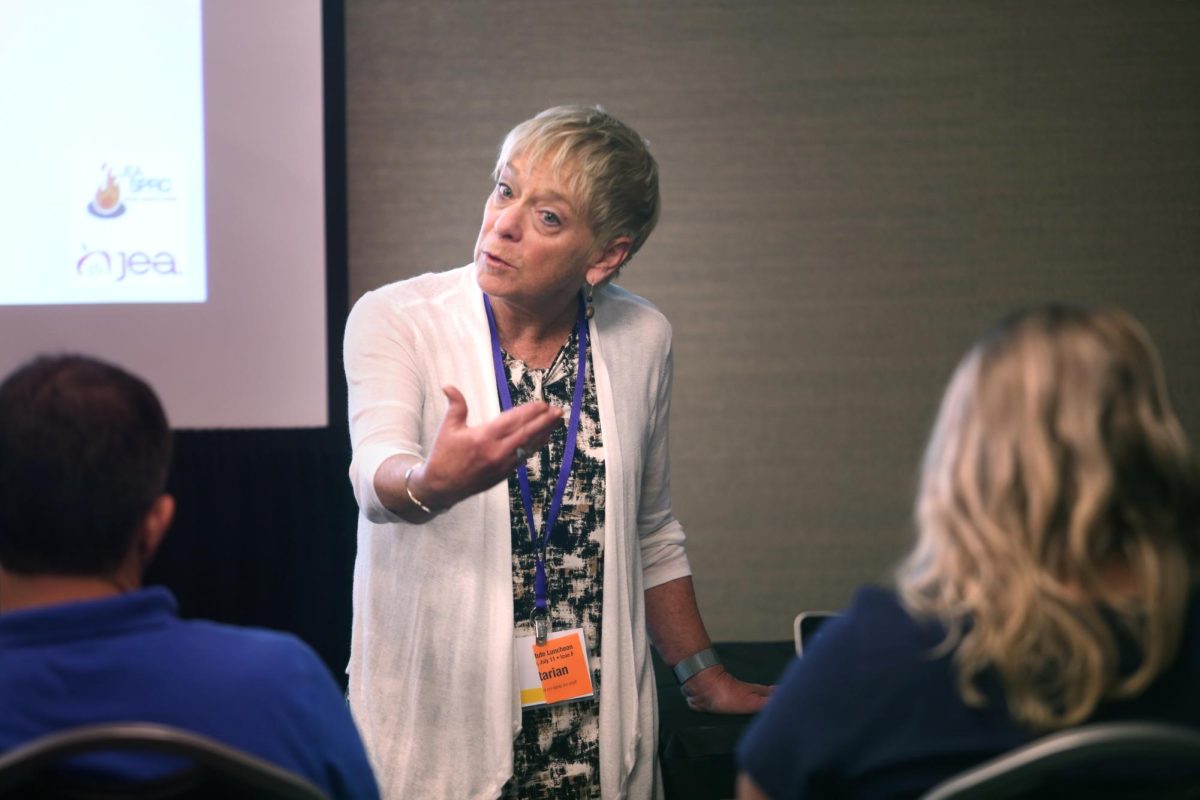Ron Clemons, JEA president 1979-1983, was never just a member. He was always a doer.
He attended his first JEA Convention in 1966 at the Edgewater Beach Hotel in Chicago, and it wasn’t long before he was the face of JEA as he sold advertising for Communications: Journalism Education Today. Thirteen years later he was president. At the end of his presidency, he was awarded the Carl Towley award for service to JEA.
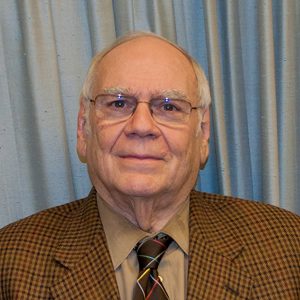
How did you start selling advertising for C:JET?
I was introduced to JEA by Virginia Woodring and Sarah Ellen Campbell, who taught at a neighboring Independence school. Virginia was the first editor of C:JET and she named me the business manager of the new publication. Because it was new, selling the ads was challenging.
How did working for C:JET and JEA affect your career?
I felt I became a better teacher and adviser. JEA also made me realize I wanted journalism education to be my life-long profession — and it did for 40 years.
I was director of Blair Summer School for Journalism for nearly 30 years. This was a five-week international high school journalism program for outstanding high school journalism students. This led to my meeting some of the top journalists and politicians in the country. What makes this so important is that my five-year term as president helped me introduce many students and their advisers to the Importance of JEA. I even visited with Ted Kennedy about JEA. He was familiar with CSPA (spoke there once), but was not familiar with JEA. He was especially interested because JEA was involved with the Robert F. Kennedy Press Freedom Award, one that my Truman High School newspaper won three times. Our winning this award was instrumental in my meeting with Senator Kennedy, thus introducing him to JEA. I also invited advisers and even some journalism administrators to our JEA Convention, which many of them attended. All if this could not have happened without my involvement in and love for JEA.
You served on the board, mentored advisers and taught at conventions and workshops. Is there one aspect or one memory that stands out?
There were so many, but the most important was when I chaired the Kansas City Convention in 1978. I was first vice-president but I was more excited about chairing the convention than being an officer. Working with the convention made me feel valuable and that’s when JEA became near and dear to me.
What is one of the most important things that happened during your presidency?
When I became president, there was discord between JEA and the Southern California group. I dislike discord, so I immediately created a special committee combining the two groups. We first met at the summer officers’ retreat in 1979, and I am glad to say it worked out.
Where should JEA be directing its efforts now?
Continue focusing on Student Press Rights but really focusing more on the responsibility that comes with these rights. We also need to point out the problems with today’s media. I am saddened at the lack of unbiased reporting. Students need to realize this is not what journalism is supposed to be. Where are the Walter Cronkites?
What is a highlight of JEA for you?
What I remember most was meeting all of the stalwarts of Scholastic Journalism. To think I became friends with all of these leaders I admired so much: Ruth Marie Griggs, Dorothy McPhillips, Sister Ann Christine, Paul Swenssen, Kenneth Stratton, just to name a few. I am still in awe of them — and the many others who have followed. JEA will always be a special part of my life!
